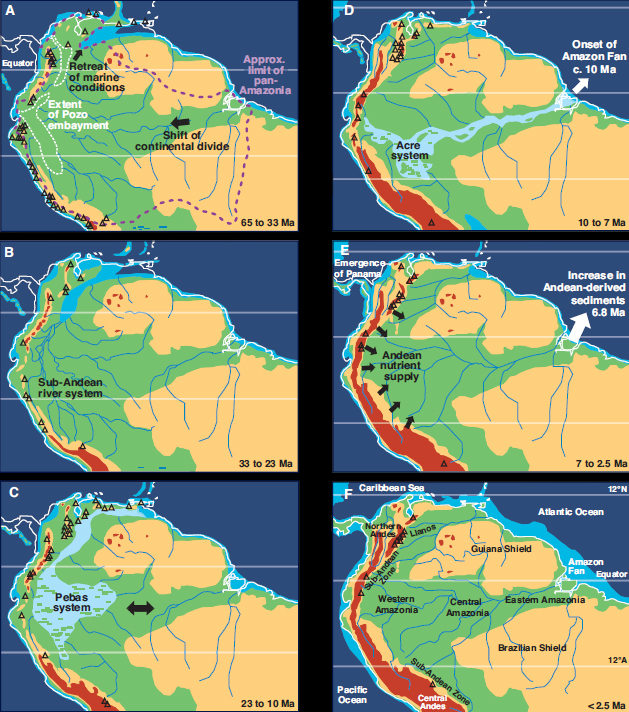Dr. Fabian Michelangeli is a curator at the New York Botanical Garden. Here in this short documentary, we see snaphots of phases of an expedition he organized to the Yanachaga–Chemillén National Park located in the cloud forests of Peru located in search of plants that help us better understand the state of global biodiversity, climate change, and other factors that contribute to far-reaching conservation efforts.
The Andes mountain range of South America is a geological marvel that initiated the speciation of a mind boggling diversity in the tropical Americas. Cloud forests is one of those special places that harbor great diversity along an altitudinal gradient. The formation of the Andes mountain range began with the events of the Triassic when Pangaea began to break up and several rifts developed. It still continues today. During the Cretaceous Period the Andes began to take its present form, through the uplifting, faulting and folding of sedimentary and metamorphic rocks of the ancient cratons to the east of the continent. The range has many active volcanoes, which are distributed along four volcanic zones. The volcano Chimborazo in the Ecuadorean Andes is farther from Earth’s center than any other location on Earth’s surface, due to the equatorial bulge resulting from the rotation of our planet. Andes changed the entire Amazon Basin over tens of millions of years.
As the prominent tropical biologist Stephen Hubbell mentioned in the foreword of his book Neutral Theory of Biodiversity the state of tropical biology is still resembling to that of medicine in the middle ages. We’re still cutting bodies open (organizing expeditions) to see what organs (species) are inside. As we visit more remote places the gaps in our knowledge of Amazon flora is revealed. The entire North America harbors about roughly 300 tree species. Impressively, in the tropics, a single hectare of forest can harbor the same number of species.
Based on a curated sampling of more than half a million museum specimens collected from the Amazons over 300 years, scientists predict that about 4,000 rare types remains to be discovered. In the documentary Dr. Michelangeli demonstrates a classic example of collecting plant samples in the field. Newspapers are great for “pressing” plant material until they get prepared properly in a herbarium such as the New York Botanical Garden herbarium:



1 Comment
I’d love to know the music that accompanies this video